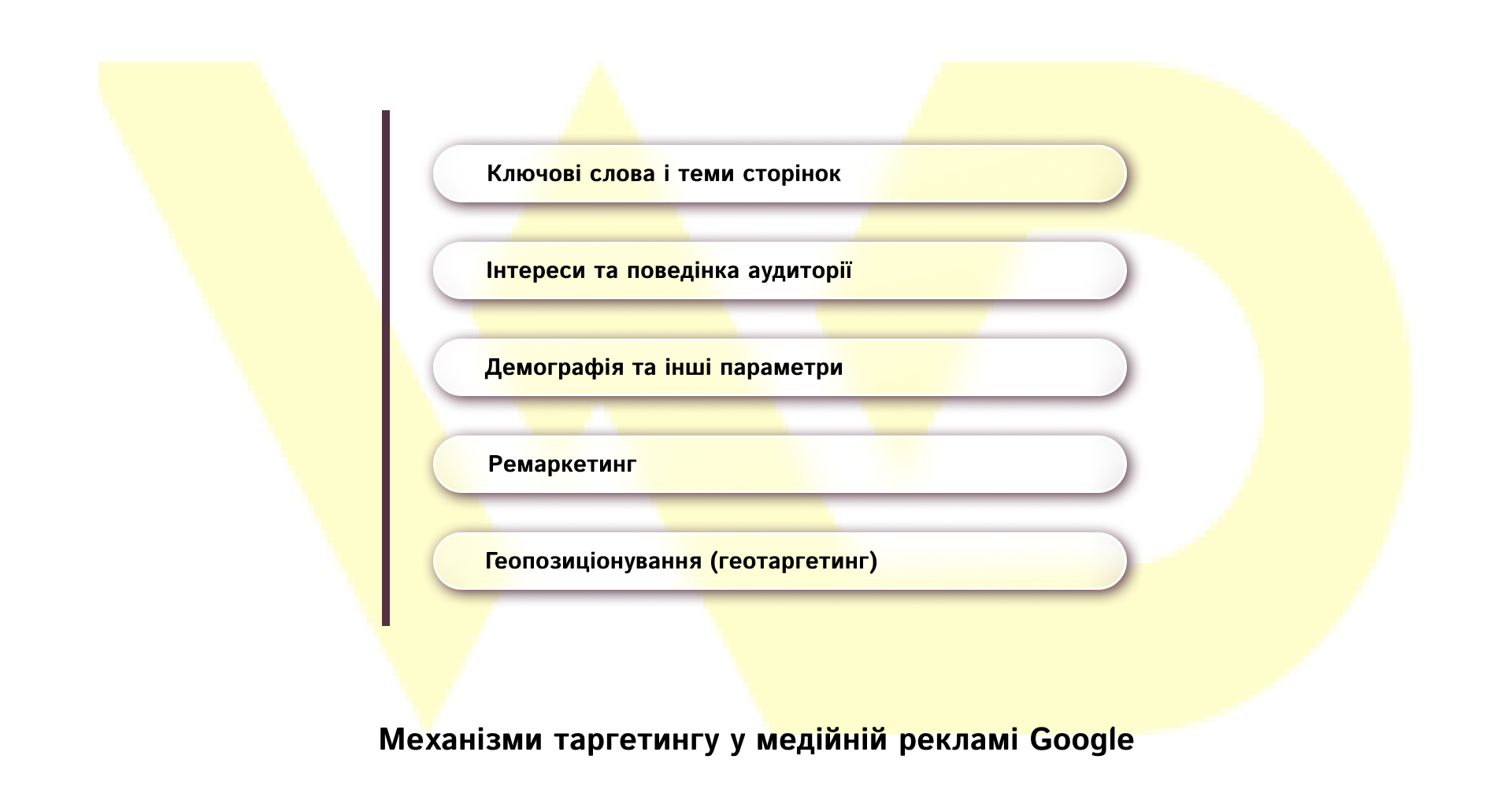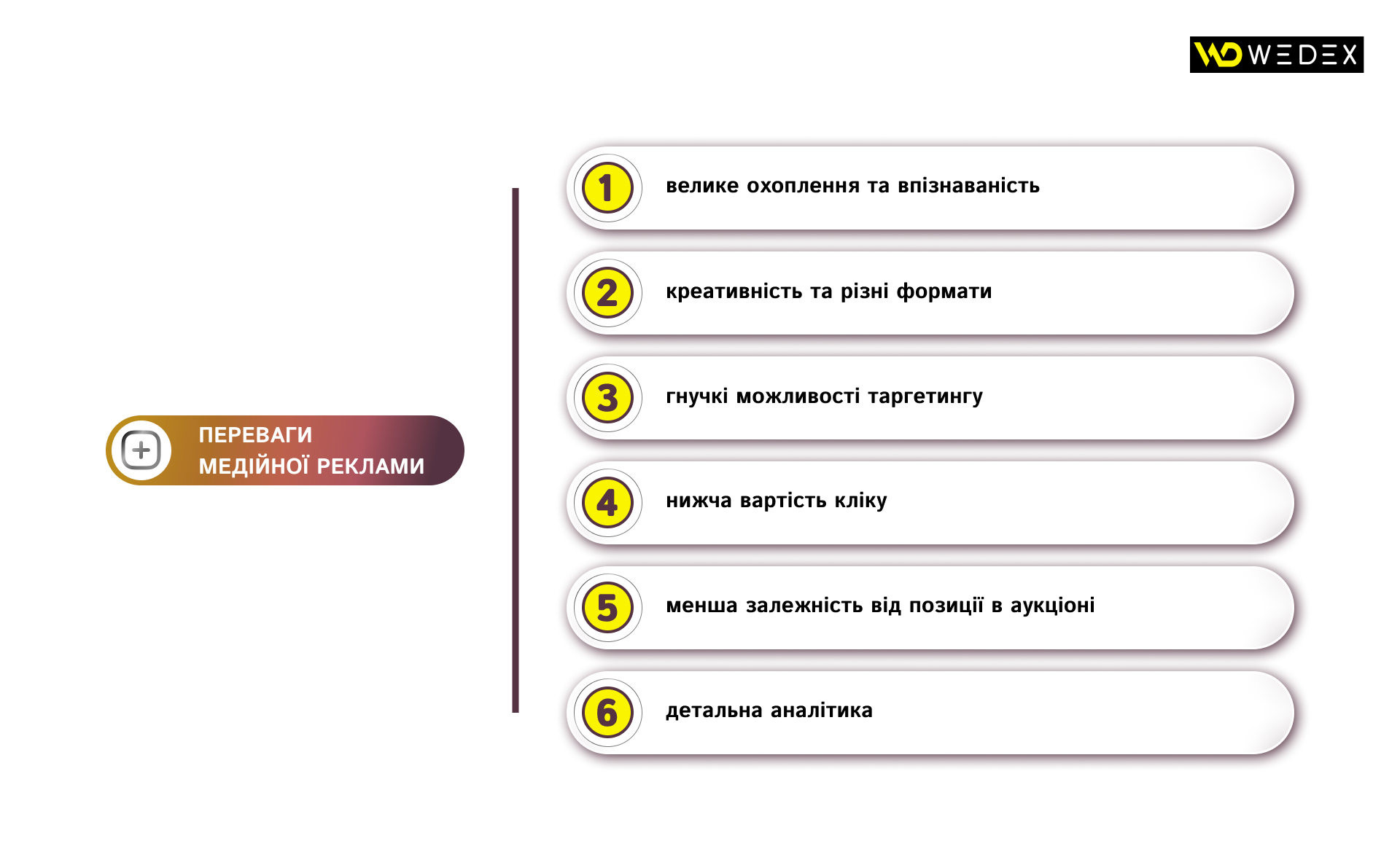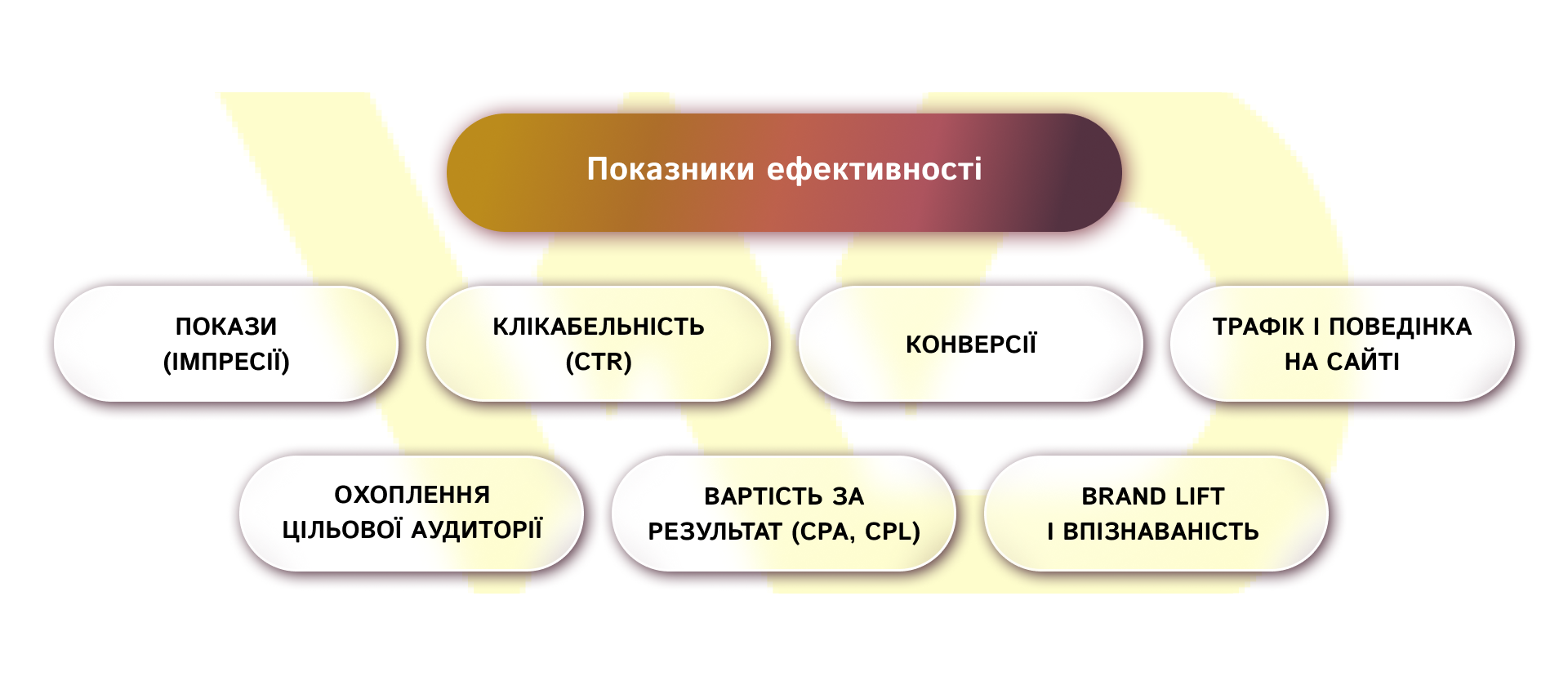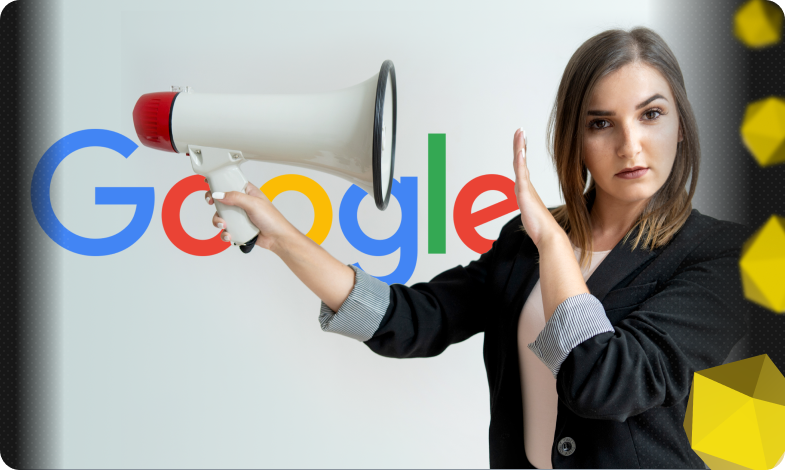Content of the article
- /01 What is display advertising and how does it differ from search advertising?
- /02 How Google display advertising works
- /03 Where ads are displayed
- /04 Display ad formats
- /05 Who is suitable for display advertising
- /06 Advantages and disadvantages of display advertising
- /07 How to launch an effective media campaign
- /08 Performance indicators
- /09 Cost of display advertising


The digital market is becoming more and more saturated, and users spend time not only searching, but also reading news, watching videos, email, and mobile applications. In this environment, display advertising plays a key role in building brand awareness, finding new audiences, and returning interested users. In this article, we will take a closer look at how display advertising on Google Display Network (GDN) works, what formats are available, who it is suitable for, how to plan a campaign, what mistakes to avoid, and how to evaluate its effectiveness.
What is display advertising and how does it differ from search advertising?
Display advertising is an ad in the form of banners, videos, native units, audio, or responsive creatives that are shown to users on websites, apps, YouTube, or Gmail via the Google Display Network (GDN). Unlike search ads, which are activated by a user’s search query and are intent-driven, display ads
- works proactively – it finds an audience where people are online, even if they are not looking for anything;
- emphasizes recognition, emotion and branding rather than instant sales;
- allows the use of rich visuals and video, which is better suited for storytelling.
This means that display campaigns are effective at the awareness and reflection stages of the sales funnel, as well as in remarketing strategies.
How Google display advertising works
The Google Display Network combines many different resources. To show ads to those users who may be interested in your offer, you can set up the following targeting mechanisms in your campaigns:

- Keywords and page topics: ads appear on pages whose content corresponds to the specified topics or keywords. For example, car sales can be advertised on websites about automotive topics.
- Audience interests and behavior: Google analyzes the sites and content visited by users to understand their interests. Advertisements can be targeted to people interested in certain topics (e.g., «sports activities», «travel», etc.).
- Demographics and other parameters: if necessary, you can specify the age, gender, location, and other characteristics of the target audience.
- Remarketing: a special way of targeting when ads are shown to those who have already visited your website or interacted with your business. This helps to «catch up» with users with a personalized offer (for example, to show a person a product they have viewed but not bought).
- Geo-positioning (geo-targeting): showing ads to people in a certain region or even a radius near your point of sale. For example, based on the user’s current location.
Google Ads automatically selects the optimal ad for each display, taking into account who sees it and where. Algorithms take into account user attributes and page content to match relevant ads with the audience. Therefore, the success of display advertising largely depends on the correct targeting settings and the quality of the creative.
Where ads are displayed
Google display ads appear almost everywhere people spend time online. The main display platforms are:
- Google partner sites: millions of web resources on all topics (news, sports, hobbies, tech blogs, price comparison sites, etc;)
- YouTube: video ads before videos or in the playlist;
- Gmail: media blocks in the user’s inbox;
- mobile applications and mobile web pages;
- social networks (using the Google Marketing Platform); for example, remarketing can be set up so that ads are shown in Facebook or Instagram feeds to users with certain interests directly through Google or separate tools.
Thanks to this variety of platforms, businesses can reach users on their favorite platforms. For example, according to Google, display ads help «tell potential customers about your company when they’re browsing their favorite websites or YouTube videos, checking their Gmail, or using mobile apps.»
Your brand can be everywhere your audience is.
Media advertising on Google helps showcase your business on top websites, YouTube, Gmail, and apps — and WEDEX knows how to do it effectively.
Display ad formats
Google Display Ads supports a variety of ad formats, and each of them has its own features and applications. Choosing the right format directly affects the effectiveness of the campaign, as users interact with graphics, text, video, or interactive content in different ways.
Banner advertising
This is one of the most common formats that can be static or animated (GIF, HTML5). Banners consist of an image and a short call to action. They can be displayed in different sizes: rectangles, squares, leaderboards. Due to their visual simplicity and flexibility, banners are suitable for mass audience reach.

Text + image advertising
The format combines an image, a headline, and a description. It is a universal solution for various platforms that allows you to provide more information than in a classic banner, but at the same time maintain visual appeal.

Video ads
Short videos lasting 15-30 seconds that are displayed before or during video viewing on YouTube, as well as in special video blocks on partner sites. The format allows you to emotionally influence the user, creating an immersive effect. The videos can be interactive – with clickable elements, product cards, or even 360° videos.

Audio advertising
Audio ads are placed on websites or apps with audio streaming, such as music services, podcasts, and online radio. Usually, these are short voice messages (10-30 seconds) accompanied by background music or a brand jingle.

Native advertising
Ads are integrated into the structure of the site so that they look like a natural part of the content. They can be recommendation blocks, articles, or banners in the style of «Read also» or «Deal of the day». The format is hardly perceived as intrusive advertising, which means it is more trustworthy.

Branded Content
This is a premium format when a website page or even an entire interface gets a special branded design – colors, logos, visual elements. This format requires more investment, but it ensures high recognition and creates the effect of «full immersion».

Responsive Ads
Google Ads automatically selects the best combinations of images, headlines, and texts for different ad units. This allows you to reach more sites without additional manual work. The format is well suited for testing different options and finding the most clickable creatives.

Each of these formats can be used separately or combined with each other, depending on the goals of the campaign. Testing several formats at the same time helps you understand which one gives the best results for your target audience.
Who is suitable for display advertising
Display advertising is suitable for businesses and projects that prioritize not only instant sales, but also building awareness, working with a long customer journey, and returning interested users. Below is an extended description of typical use cases and why display is effective in each of them.
E-commerce (new collections, seasonal launches)
Suitable if you need to quickly show a product to a wide audience and create a first visual impression of the collection. Banners and short videos help to demonstrate the style, use cases, and key benefits of the products, while dynamic remarketing encourages the return of those who have already been interested in the products.
Brands launching a new product or entering a new market
Display advertising allows you to create the first points of contact with potential consumers, test creative launches with different audiences, and quickly collect data on market response. This is important when scaling or localizing marketing efforts.
Online education and courses
Videos and banners are effective for demonstrating expertise (lesson fragments, testimonials), building trust, and attracting people to free webinars or trial lessons. Consistent creatives help turn a cold audience into a warm one and prepare them for registration.
Local business (cafes, salons, clinics, shops)
Geo-targeting and mobile formats allow you to reach potential customers within the range of the point of sale, and relevant promotional banners encourage visits with clear offers and limited-time promotional offers.
B2B and niche services
Targeted placement on industry platforms and targeting by job title or interest help to increase awareness among decision makers. Display advertising here works as a support for communication with a longer sales cycle and lead generation.
High-value products and solutions (cars, real estate, appliances)
For products with long decision-making cycles, it is important to repeatedly contact the audience. Media creatives create an emotional image of the brand and product, and a combined strategy, i.e. media advertising – search – personal contacts, increases the likelihood of a quality lead.
Projects with a focus on retention and repeat sales
Remarketing in the display network effectively brings users back, reminds them of add-ons to their purchases or repeat promotions, thereby increasing LTV and reducing the cost of attracting a repeat customer.
Niche products with a clearly defined audience
If the audience is well segmented by interests, behavior, or website topics, display advertising allows you to effectively reach exactly those users on thematic resources where they are looking for information on their interest.
To summarize: display advertising is most appropriate when you need visual coverage, multi-step interaction with the audience, or return of already interested users – provided that the campaign is integrated into the overall marketing strategy and has clearly defined KPIs.
Advantages and disadvantages of display advertising
Display advertising on Google has many strengths, but also certain limitations. To understand whether this tool is right for your business, you should weigh the pros and cons.
- Great reach and recognition
Google Display Network reaches more than 90% of the world’s Internet users. This means that your ad can be seen by millions of people on thousands of different websites, apps, and YouTube. This scale allows you to quickly make your brand recognizable and remind people of yourself, even those who have not yet searched for your product.
- Creativity and different formats
Display advertising is not only dry text, but also the ability to work with visuals: banners, videos, animations, audio, and interactive formats. All this helps to stand out from the competition and convey an emotional message to the customer. For example, a video can inspire trust and emotions, while a banner with a concise message will quickly attract attention.
- Flexible targeting options
You can set up targeting by age, gender, geography, interests, or even intentions («looking for a car» or «planning a trip»). Remarketing is also available.
- Lower cost per click
There is less competition in display advertising than in search, so the cost per click is usually lower. For example, while the cost of search can range from $2 to $4, you can often get a click in the KMS for less than $1. This is especially beneficial for businesses that want to work on reach and recognition, not just direct sales.
- Less dependence on the position in the auction
In search, the place of display determines everything: the higher the ad, the more clicks. In display advertising, the main thing is to show yourself to the right audience. That’s why Google automatically optimizes placement so that ads appear where they are most relevant.
- Detailed analytics
All results are easily tracked: from the number of impressions and clicks to in-depth metrics such as conversions, engagement, and the effectiveness of specific creatives. This allows you to quickly make changes and make your campaign more effective.
The disadvantages of display advertising are as follows:

- Lower conversion rate
In search ads, users are already looking for a product, while in display ads, they see ads «by accident». Therefore, CTR and conversions are lower here. Display advertising is more about preparing the ground – creating interest and recognition – than about instant sales.
- The effect of «banner blindness»
People gradually get used to banners and stop paying attention to them. If the creative is uninteresting or too typical, it will simply be ignored. The solution is to constantly test new designs, use video, animation, or non-standard formats.
- The risk of display on dubious websites
Sometimes ads can appear on websites with a bad reputation or irrelevant content. This can damage the brand image. Google makes it possible to exclude unwanted sites and categories, but it is difficult to ensure full control.
- Ad blockers
Some users use AdBlock and other browser extensions that simply «cut out» ads. This leads to the loss of a certain part of the audience, especially among more tech-savvy users.
Taking all these factors into account, we can say that display advertising is great for building brand awareness, reminding people about yourself, and attracting new audiences. But if the main goal of your business is to make instant sales here and now, you should combine it with search advertising, which solves this very task.
How to launch an effective media campaign
Let’s take a look at the important steps that will help make your campaign effective.
Step 1. Define your goals and audience
Before launching a campaign, you need to know exactly what result you want to achieve: more reach, increased traffic, or increased conversions. Next, it’s important to narrow down your audience – determine its demographics, interests, and behavior. The more accurate the portrait of a potential customer, the higher the return on advertising.
Step 2. Develop creatives for each platform
Advertising banners and videos should be adapted to the sizes and formats of specific platforms. Use bright visuals, simple, expressive headlines, and clear calls to action. The main idea should be clear in a second – even without text, the user should understand what you are offering.
Step 3. Run A/B testing
Create several ad variations and run them in parallel. Track which formats get more clicks and conversions. Disable ineffective variants and test new ones constantly. This will help you avoid banner blindness and save your budget.
Step 4. Set up the schedule and frequency of impressions
Analyze when your target audience is most active and set your ad schedule for those hours. Also, limit the number of impressions to one person – usually 3-5 times a week is enough to make the ad memorable but not irritating.
Step 5. Analyze and optimize regularly
Review your campaign statistics daily: which ads give the best results, which platforms work more efficiently, how users behave on the site after clicking. Based on this data, quickly make changes to creatives, bids, or targeting settings.
An effective Google Ads campaign is not a one-time launch, but a constant process of improvement. From setting the right goals and choosing the right audience to regular testing and analytics, every step affects the final result. Flexibility, attention to detail, and readiness to quickly adapt to changes make a campaign truly successful.
Performance indicators
To evaluate the effectiveness of a media campaign, it is important to track a number of metrics that show not only the visibility of ads but also the real impact on the business.

- Impressions. Displays the number of times an ad was shown to users. This is a basic indicator of reach. A high number of impressions indicates that the campaign has reached a large audience, but it is worth keeping in mind that this indicator alone does not guarantee effectiveness. For example, a banner could be seen by thousands of people, but without any interest in the product.
- Click-through rate (CTR). Shows the percentage of users who clicked on an ad. In display campaigns, CTR is usually low (often below 5%), but it demonstrates the relevance and attractiveness of the creative. You can increase CTR by making your message clearer, your design more striking, and by fine-tuning your audience.
- Conversions. This is the final measure of effectiveness – the actions you expect users to take: purchase, registration, app download, or call. If the number of conversions is low, you should check the entire chain: from the message on the banner to the content of the landing page. For example, a bright advertisement with a promotion can attract attention, but if the site does not have a clear description of the terms and conditions or a convenient order form, the user will simply leave.
- Traffic and behavior on the website. It’s important to track not only the number of visitors but also their interaction with the page: average time spent on the page, number of pages viewed, bounce rate. This gives you an understanding of how relevant the traffic was and whether the landing page meets the expectations of users.
- Reach of the target audience. This indicator shows how much of your target audience saw the ad. It helps to understand whether the campaign is working for the right segment. For example, for a sportswear brand, it is more important to reach young active users than the entire audience without filtering.
- Cost per result (CPA, CPL). One of the key indicators that shows how much it costs to attract one customer or lead. This directly affects the calculation of the return on investment (ROI). If CPA is too high, you need to revise either creatives or targeting settings.
- Brand Lift and recognition. For some campaigns, the goal is not direct sales, but to increase brand awareness or create a certain image. In such cases, it is advisable to measure the effect through surveys, association research, and increased brand traffic.
Proper evaluation of display advertising effectiveness is based not on a single metric but on a comprehensive analysis. At the planning stage, it is important to identify key KPIs, from the number of registrations and sales to the coverage or recognition rate. By comparing them with costs, businesses can clearly see the real return on their advertising investment.
Cost of display advertising
The cost of display advertising on Google is formed mainly from the bids in the advertising auction and agency fees if the campaign is run through a marketing company. The main payment model is CPC (cost-per-click). It means that advertisers pay only for the actual transitions of users to the website.
The average CPC on Google’s display network is much lower than on the search network. For example:
|
Ad type |
Average CPC |
Source |
|
Search network |
$2-$4 |
|
|
Display network (CMN) |
less than $1 |
|
|
Ukraine, 2021 |
2.45 UAH (1.15-4.37 UAH) |
Prices vary depending on the competition in the niche, the quality of creatives, the accuracy of targeting, and the size of the budget.
Budget planning and approach to spending
Most often, a media campaign is launched with a test budget, evaluated for effectiveness, and gradually scaled up. This allows you to:
- experiment with different creatives and formats;
- test targeting for different audience segments;
- avoid large unforeseen expenses at the start.
Display advertising should be seen not only as a tool for instant sales, but also as a way to gradually build brand awareness and customer loyalty. It allows you to reach users at different stages of the customer journey, remind them of products or services, and support contextual and search campaigns. For companies seeking to scale or systematically work with the customer journey, display advertising should definitely be part of their marketing strategy.







 22/10/2025
22/10/2025  1187
1187


